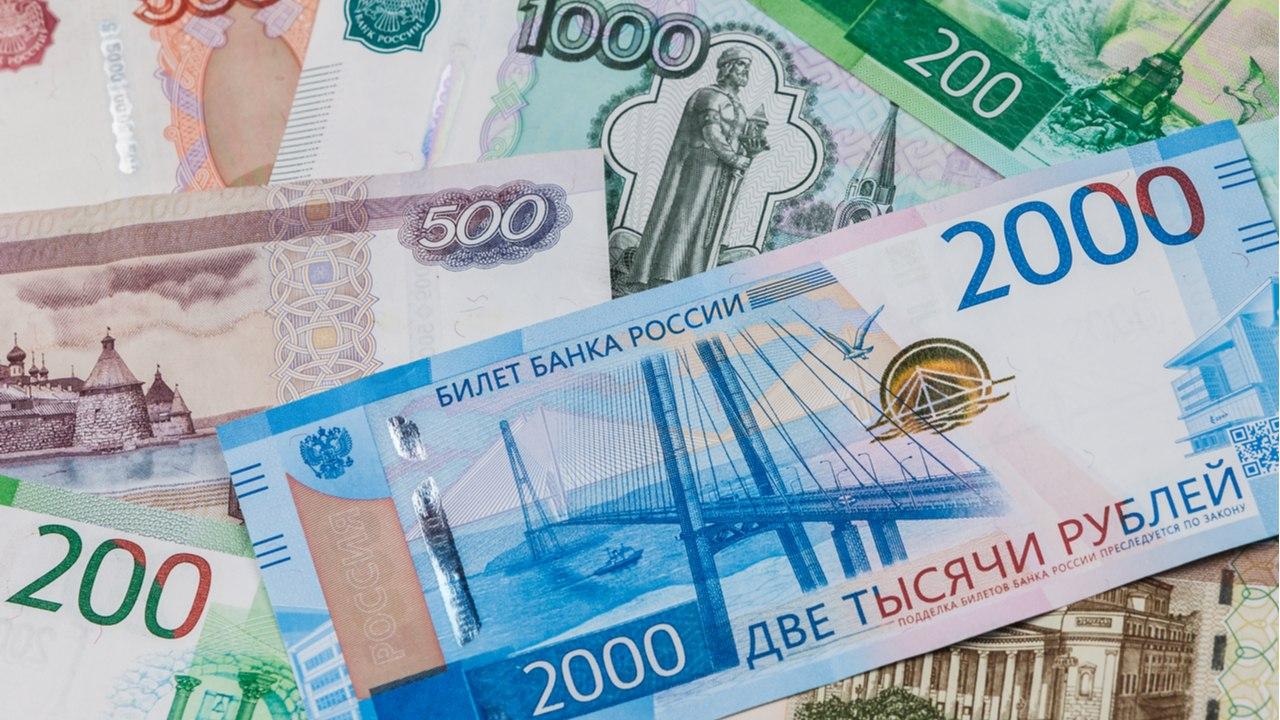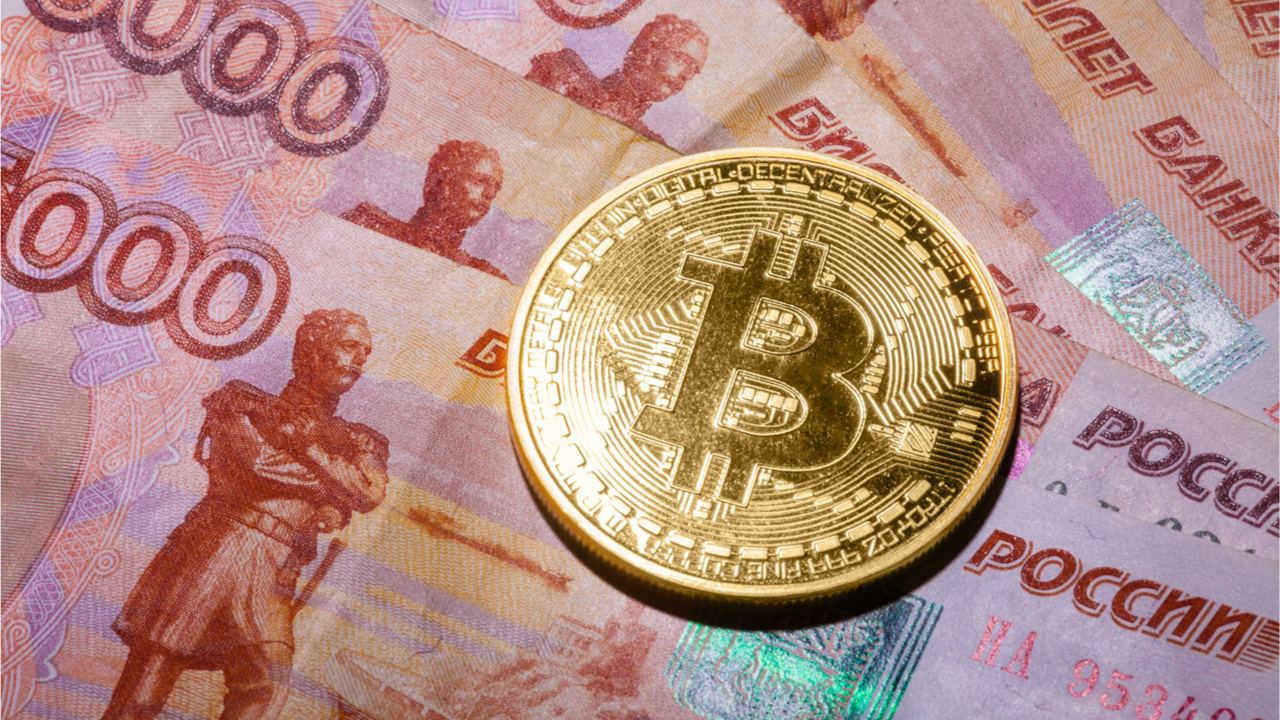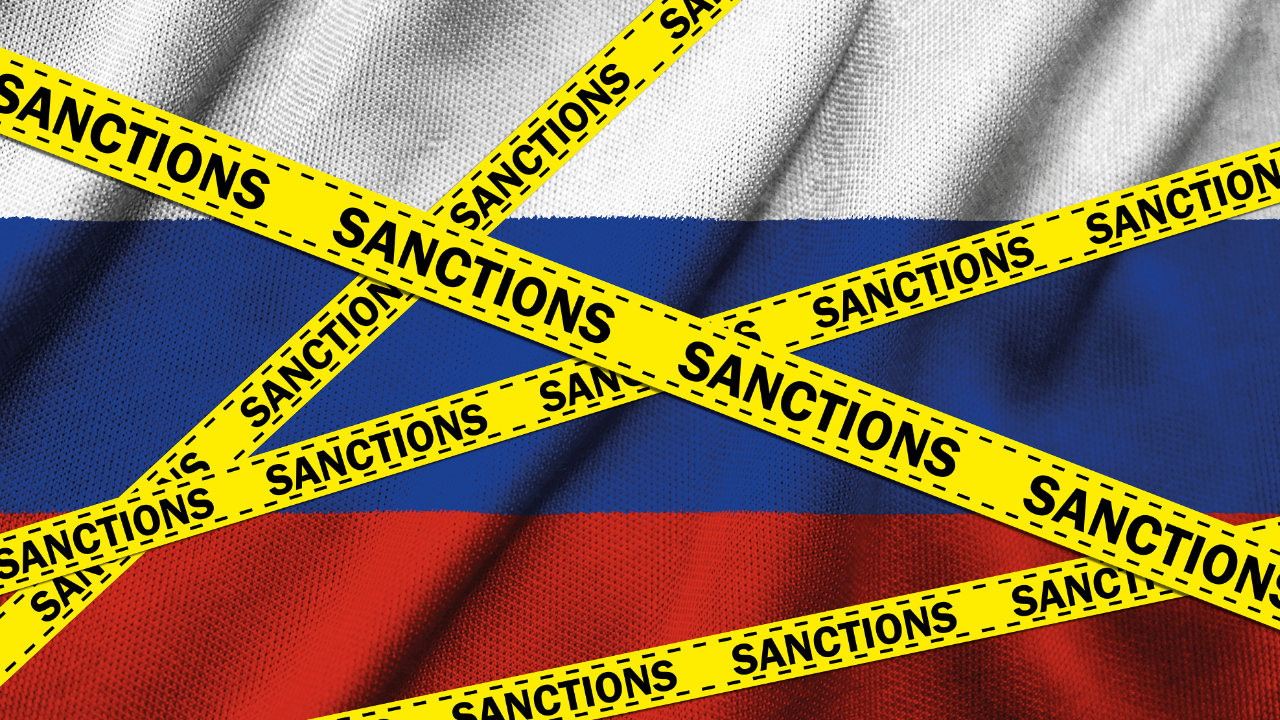 Russia is moving away from the dollar and the euro as payment options for its energy exports, and bitcoin has been mentioned as a possible substitute alongside the ruble and the national currencies of partnering countries. A high-ranking parliamentarian has indicated that Moscow may take cryptocurrency for natural gas and other resources. Russian Official Mentions […]
Russia is moving away from the dollar and the euro as payment options for its energy exports, and bitcoin has been mentioned as a possible substitute alongside the ruble and the national currencies of partnering countries. A high-ranking parliamentarian has indicated that Moscow may take cryptocurrency for natural gas and other resources. Russian Official Mentions […]
The bullish outlook appears as the Russian central bank imposes stricter capital controls on its citizens, including a ban on using rubles to buy the U.S. dollar.
Bitcoin (BTC) has declined by around 30% after topping out at 5.8 million rubles a token on March 9. Nonetheless, the said drop could be an excuse for traders to dump another big stash of the Russian national currency if a classic bullish continuation pattern plays out.
Dubbed the "ascending triangle," the pattern appears when the price consolidates between a rising lower trendline (support) and a flat upper trendline (resistance). It completes after the price breaks out of the consolidation range in the direction of its previous trend, eyeing levels at length equal to the maximum distance between the triangle's upper and lower trendline.
BTC's price against the ruble has been trending inside a similar structure since January 2021, as shown in the chart below. It closed above the triangle's upper trendline, rising more than 20% to its all-time high of 5.88 million rubles.

Nonetheless, BTC corrected to test the range's resistance as support, a common sight following breakouts as traders seek confirmation of the pattern with more upside.
If this is the case, the likelihood of rebounding and continuing toward 11 million rubles appears high in the future, an almost 140% rise.
The technical bullish outlook for the BTC/RUB market also comes amid an ongoing exodus from Russian assets since Russia's invasion of Ukraine, as western nations have collaborated to damage the country's ties with the global banking system.
As a result, Moscow Exchange has suspended trading from Feb. 28 until further notice. Similarly, shares of Russia-backed companies abroad have suffered, with an MSCI index tracking their exchange-traded funds reporting nearly a 78% outflow since the invasion began on Feb. 24.
Related: Ally or suspect? The war in Ukraine as a stress test for the crypto industry

As of March 7, the ruble had tumbled by more than 50% year-to-date against the U.S. dollar, its biggest decline since 1998 when Russia defaulted on its debt. The Russian central bank intervened through a sequence of capital control measures, including a ban on foreign currency sales for six months.
The views and opinions expressed here are solely those of the author and do not necessarily reflect the views of Cointelegraph.com. Every investment and trading move involves risk, you should conduct your own research when making a decision.

There are few winners among Bitcoin hodlers this week, as stocks get squashed while commodities run wild.
Bitcoin (BTC) recovered from one-week lows on March 8 after a lack of progress in Russia-Ukraine talks sent markets tumbling.

Data from Cointelegraph Markets Pro and TradingView showed BTC/USD bouncing at $37,170 on Bitstamp after Monday’s Wall Street open.
Overnight progress maintained support, with the pair trading at around $38,500 at the time of writing.
Crypto and stocks had reacted badly to the third round of negotiations to end hostilities between Russia and Ukraine ending in a lack of consensus.
“There are small positive subductions in improving the logistics of humanitarian corridors... Intensive consultations have continued on the basic political block of the regulations, along with a ceasefire and security guarantees,” negotiator Mykhailo Podolyak nonetheless tweeted as part of feedback following conclusion of the talks.
The news was not enough to provide any form of hope, however — U.S. stocks trended down throughout the session, the S&P 500 ending Monday with 2.95% losses.
Commodities, meanwhile, saw spikes which were often unprecedented, such as nickel jumping past $100,000 per ton on the London Metal Exchange.
Commodities are trading like meme stocks.
— Dylan LeClair (@DylanLeClair_) March 8, 2022
Wheat +17%, +75% YTD. pic.twitter.com/04T2h5aRmR
At the same time, pain continued for Russia, with only ruble-exposed investors hedging in BTC seeing some form of relief. On Monday evening, BTC/RUB hit new all-time highs of just over 5 million on Binance.

Amid the mayhem, and despite Bitcoin’s lackluster price reaction as a safe haven paradoxically correlated with stocks, there were nonetheless votes of confidence from diehard supporters.
“The world is watching trust get repriced in real time,” Marty Bent, founder of Bitcoin media company TFTC summarized.
“When the dust settles bitcoin will be the biggest benefactor bc the masses will realize a distributed system that cannot be controlled by a single person, government, corporation or coalition is the only thing they can trust.”
Regulatory concerns from the U.S. meanwhile also contributed to the market's cold feet.
For low timeframe trades, Bitcoin nonetheless looked fairly unappealing for many, with upside potential decidedly limited.
Related: 3 reasons why Bitcoin can rally back to $60K despite erasing last week's gains
For popular traders Anbessa and Crypto Ed, $40,000 remained an obvious target for a bullish divergence.
#BTC LTF Intraday Update ✅
— AN₿ESSA (@Anbessa100) March 7, 2022
bullish divergence playing out up 3% pic.twitter.com/Gabh2xSF5P
“Target can be defined better when that correction is finished, but for now sticking with ~40k,” Crypto Ed added.
As Cointelegraph reported, upcoming events in the U.S., notably consumer price index (CPI) data due Thursday and a decision on interest rate hikes next week, were apt to disrupt sentiment in the short term.
 Analysts from Venezuela have expressed their worries about the expulsion of a number of Russian banks from SWIFT, an international messaging system that allows the interconnection of banks. These measures could affect the finances not only of Venezuela, but also of other countries in the region, damaging their capability to move funds, which is highly […]
Analysts from Venezuela have expressed their worries about the expulsion of a number of Russian banks from SWIFT, an international messaging system that allows the interconnection of banks. These measures could affect the finances not only of Venezuela, but also of other countries in the region, damaging their capability to move funds, which is highly […] According to reports and data stemming from ruble-denominated crypto trading pairs, Russian citizens are flocking toward cryptocurrencies amid the conflict in Ukraine. Analytical data indicates that the ruble is the sixth most traded pair with tether and tether’s fourth most traded fiat-denominated pair globally excluding two crypto assets. Report Highlights Russian Rubles Pouring Into Tether, […]
According to reports and data stemming from ruble-denominated crypto trading pairs, Russian citizens are flocking toward cryptocurrencies amid the conflict in Ukraine. Analytical data indicates that the ruble is the sixth most traded pair with tether and tether’s fourth most traded fiat-denominated pair globally excluding two crypto assets. Report Highlights Russian Rubles Pouring Into Tether, […] A bank run has started in Russia as citizens rush to withdraw cash amid escalating sanctions. The Russian ruble also nosedived to a record low, plunging more than 30%. “There are about 70 people in line. Eyewitnesses say the money in the ATM runs out within 40 minutes.” Russians Rush to Withdraw Cash as Sanctions […]
A bank run has started in Russia as citizens rush to withdraw cash amid escalating sanctions. The Russian ruble also nosedived to a record low, plunging more than 30%. “There are about 70 people in line. Eyewitnesses say the money in the ATM runs out within 40 minutes.” Russians Rush to Withdraw Cash as Sanctions […] Amid the conflict in Ukraine with Russia, bitcoin trade volumes tied to Russian ruble pairs have surged in recent days. Metrics recorded by the crypto analytics provider Kaiko indicate that ruble (RUB)-denominated bitcoin volume reached close to 1.5 billion rubles four days ago, on February 24. Data also shows that bitcoin-ruble pairs saw a significant […]
Amid the conflict in Ukraine with Russia, bitcoin trade volumes tied to Russian ruble pairs have surged in recent days. Metrics recorded by the crypto analytics provider Kaiko indicate that ruble (RUB)-denominated bitcoin volume reached close to 1.5 billion rubles four days ago, on February 24. Data also shows that bitcoin-ruble pairs saw a significant […]
A week unlike any other in Bitcoin's history is suddenly here as hodlers brace for guaranteed turmoil.
Bitcoin (BTC) starts a new week in the shadow of a new geopolitical conflict — what are the main hurdles that investors face?
In what has become an unrecognizable macro-environment compared to even days ago, Bitcoin, like many other assets, is feeling the pressure.
Russia’s invasion of and subsequent war against Ukraine is wreaking havoc on global markets, and developments can upend sentiment within hours or just minutes.
The timing has hit Bitcoin, too — its “safe haven” quality is seeing a serious test, as investors look for safety and fiat bagholders look for an exit.
As the overriding influence this week, Cointelegraph takes a look at what might lie in store for Bitcoin in the short term as it holds up against complex and almost surreal macro events.
Five topics for BTC investors this week can be found below.
It goes without saying that the Russia-Ukraine conflict is the main driver of market performance this week.
The situation, having only arisen in its current form five days ago, remains in a state of constant flux — sanctions keep coming, both sides and their allies continue to knuckle down, markets react to new threats and probabilities.
Chief among them is Russia’s economy, which is bracing for turmoil on Monday. Stock trading has been pushed back to at least 3 pm local time, and the prognosis is bleak for its currency, the ruble, which is already trading at record lows.
Talks are scheduled to begin Monday, and any glimmer of hope could cause an about-turn in the short-term outlook and thus change the face of markets.
While uncertainty rules, however, everyone will be looking for the ultimate safe haven, and Bitcoin’s use — whether by ordinary Russians and Ukrainians or their governments — is already a talking point.
As Cointelegraph reported, Ukraine’s army has already raised millions of dollars in crypto aid, and far-reaching sanctions against Moscow could yet facilitate a pivot to Bitcoin as an economic tool.
The idea has not passed the establishment by — Mykhailo Fedorov, Ukraine’s deputy president, called on exchanges to block Russian and Belarusian users’ funds.
“Bitcoin is like a knife to a surgeon or a knife to a criminal,” podcast host Preston Pysh wrote at the weekend, summing up the situation.
“Like any valuable technology throughout time, its value comes from the intention behind its use.”
Markets, meanwhile, will likely be driven depending on shifts in events on the ground and knock-on effects for governments.
Urals med crude (russian oil) vs brent pic.twitter.com/ePk6V7cSCu
— Zhu Su (@zhusu) February 28, 2022
So far, oil — but not Russian oil — has been one of the few beneficiaries of the war, while Bitcoin has managed to remain fairly stable — unlike gold, which first gained rapidly and then lost all its newly-won ground.
Bitcoin and altcoins’ correlation to traditional stock markets remains, however, and low timeframes are thus apt to provide a real headache for traders regardless of what turns the war takes.
With traditional markets poised to be extremely volatile on their respective Monday opens, guessing how Bitcoin will fare on the shortest timeframes is a real problem.
Correlations aside, Bitcoin has so far managed to remain in a fairly tight range, and $40,000 is a clear resistance zone for bulls to beat.
The problem, however, is that any more dramatic move could ultimately come as a result of major macro changes and thus be an unreliable longer-term signal.
“Down about 4% on Sunday am 5:00EST (Feb. 27) from Friday, Bitcoin is indicating a rough week for risk assets,” Mike McGlone, chief commodity strategist at Bloomberg Intelligence warned.
A popular Twitter account meanwhile noted that current levels represent the so-called point of control (PoC) for the past 15 months, with $38,000 seeing large volumes relative to other price points in the current range.
“When it comes to Bitcoin, the playing field seems quite simple,” a more hopeful Michaël van de Poppe argued.
“Consolidation happening after a bullish move during the past week. If you truly want to see more momentum, then the corrections shouldn't be that deep so $38.1-38.2K must hold. Then, we could be going to $44K.”
With U.S. markets still to open at the time of writing, the picture may well change entirely before Monday is out.
A comparison to March 2020 may be useful — at that time, Bitcoin first fell in line with global markets, only to rebound as an asymmetric bet that took hodlers on a bull run never seen before for the next nine months.
Remember the March 2020 Bitcoin Crash? (-82% from 2017 high). Imo unlikely to recur, but it could if another macro shock comes around. I psychologically prepare by imagining absolutely sitting tight while the market repeatedly punches me in the face. https://t.co/X8l699B4w1
— Tuur Demeester (@TuurDemeester) February 27, 2022
Sunday’s close did not really go according to plan for Bitcoin market observers.
A last-minute dive took away the chances of closing the week and the month above $38,500, and thus gave the history books their first four straight monthly red candles since the 2018 bear market.
Already an unexpected comedown, last week’s events appear so far to only be making things worse for Bitcoiners, who have yet to see the cryptocurrency branch out on its own, away from traditional assets.
Also causing a headache for analysts is the monthly chart relative to its 21-month exponential moving average (EMA), which could be apt to disappear as support should losses continue.
The 21 EMA being broken has been a common feature of macro bear trends for Bitcoin, with February mercifully avoiding a repeat performance.
“Tomorrow's Monthly Close is critical. If we close below $37,000 (purple 21m/EMA) that gives us the same bearish signal as all other previous Macro Downtrends,” analyst Kevin Svenson warned against a chart showing the level.

Bitcoin previously failed to reclaim two key moving averages as a pretext for retaking higher resistance levels nearer all-time highs from November. The result, analyst Rekt Capital warned at the time, could be a potential revisiting of the range low at $28,000.
On the plus side, Bitcoin’s 200-week moving average, a benchmark that few believe will be challenged as support, crossed $20,000 for the first time this weekend.
Turning away from geopolitics, investors have every reason to keep faith in the strength of the Bitcoin network.
Despite price pressures and uncertainty on practically every timeframe, miners keep mining, and hash rate and difficulty have kept climbing.
This week may see a challenge to the status quo — hash rate is steady, but difficulty is due to decrease for the first time in 12 weeks to take the latest changes into account.
This is nothing “bad” as a phenomenon — the 1.25% decrease is modest by Bitcoin’s standards and likely reflects circumstantial changes in miner participation, rather than the start of a new trend.
According to monitoring resource MiningPoolStats, hash rate, for its part, remains above 200 exahashes per second (EH/s), a sea change from even a matter of months ago when Bitcoin hit its all-time highs.

The divergence of fundamentals from price has been extensively covered over the past year.
The question now is whether price will follow hash rate as in years gone by.
Bitcoin, true to its mantra, does not seem to have “liked” the emergence of a new armed conflict in Europe.
Related: Top 5 cryptocurrencies to watch this week: BTC, LUNA, AVAX, ATOM, FTM
Its potential roles aside, the largest cryptocurrency is not enjoying a sentiment boost as a result of recent events.
According to the Crypto Fear & Greed Index, a sentiment indicator which has seen increasing attention in 2022, the market is getting rapidly more nervous.
BTC/USD saw a relatively small dip overnight into Monday, but that was still enough to drag the Index back into its “extreme fear” territory — from 26/100 on Sunday to 20/100, its lowest since Feb. 22.
For context, January’s local lows of $32,800 produced a reading of 11/100 for Fear & Greed, this level often constituting macro lows in recent years.

Reacting, commentators nonetheless argued that the price decrease into Monday could be a forewarning by the free market that doom and gloom will reign supreme come the start of TradFi market trading.
#Bitcoin already sending signals on Monday market sentiment? pic.twitter.com/pP1rtvJGFg
— jeroen blokland (@jsblokland) February 27, 2022
Crypto’s traditional counterpart, the Fear & Greed Index, was meanwhile also in “extreme fear” mode last week before a recovery.